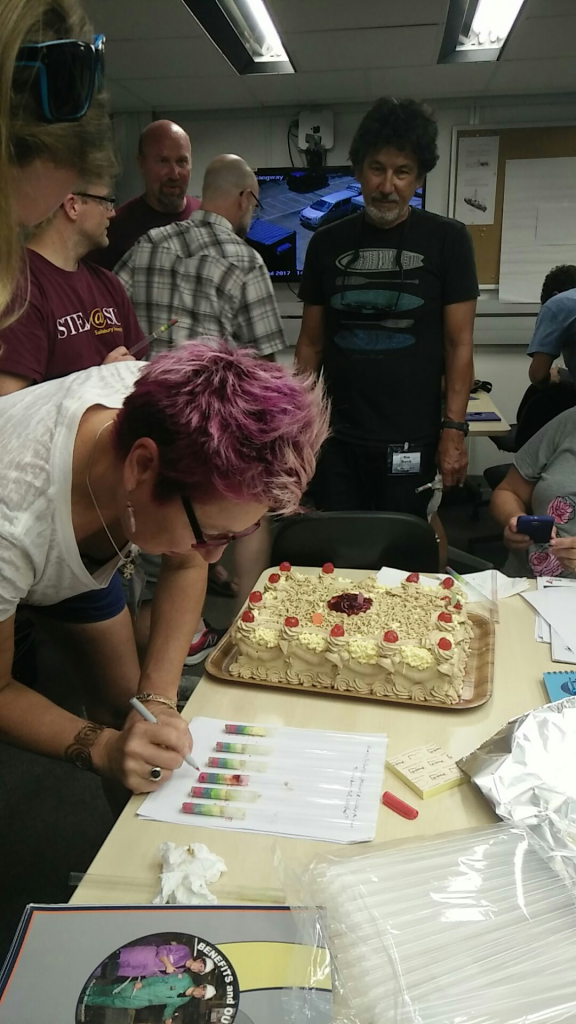
Let them eat cake (cores)
Although we haven’t yet left port (that’s tomorrow), School of Rock 2017 has begun! Today we dove into some hands-on activities that illustrate what coring is, as well as demonstrate the importance of being able to make unbiased, factual observations. The activities, in addition to being fun for us, had the ultimate goal of demonstrating activities we (as educators) can bring to our respective classrooms. The participants in this year’s School of Rock are educators and scientists from the US, Brazil, and Australia, who teach students ranging from 6th grade all the way up to undergraduates. Me, I’m technically still a student myself. My name is Rachel Bernard, and I’m an (almost) 5th year geology PhD student at the University of Texas at Austin. As a grad student, I’ve had the opportunity to TA undergraduates, and also to teach some high school with my teacher friend — and fellow School of Rock-er — Colleen. The awesome thing about the activities we learned about today, is that they can be adapted for students of any age. After all, things that are fun for middle-schoolers are still fun for me, so why not a college student?

My favorite all-ages activity we learned about today was cake coring. Basically, to show us how coring can help with cross-correlation between wells, we each used a sturdy plastic straw to “core” into an overly elaborate 4-layer cake, given to us by the IODP cooks who generously baked it just for this activity. We all took turns sliding the plastic straw into the cake. Some of us were gentle, lowering the straw into the cake slow and steady (“gravity coring”) and others were more aggressive, slamming the straw into the cake’s surface (“piston coring”). Some people also tried rotating the straw as they submerged it into the layers (“rotary coring”). It was an excellent way to introduce us to these terms for different types of coring techniques, and to help us visualize the process. By instinct, many of us then used our thumbs to cover the top of the straw and create a suction as the cake core layers were extracted. In the end, we wanted to see if the cake layers were uniform across a transect, so we compared the cake layers preserved in five straws and correlated the layers to construct a cross section. It was really fun, and there were a surprising number of discussions that stemmed from comparisons of everyone’s results: How many layers were there actually? Does blue frosting above blue cake count as the same layer, or are they each their own separate layer because of their textural differences? Does the cross-section we made look like what we saw when we cut the cake along the transect? Why is the thickness of the core smaller than that of the cake, and are there any coring techniques that could most successfully reduce this compaction? Okay, yeah, we’re dorks, but it was a fun activity with some easy parallels to make the concept of core extraction comprehendible to students of all ages. Plus, you get to eat cake at the end.